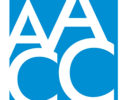Report roundup
By AACC 21st Century Center Staff
January 30, 2020
A monthly roundup of reports of interest to the community college sector.
Here are three reports you should know about this month.
- A number of colleges have attempted to replicate the City University of New York’s (CUNY’s) Accelerated Study in Associate Programs (ASAP), which provides students with up to three years of financial and academic support and other support services. An experimental evaluation of CUNY ASAP found that graduation rates nearly doubled after three years. MDRC is out with a report about a replication of the ASAP model at three Ohio community colleges – Cincinnati State Technical and Community College, Cuyahoga Community College and Lorain County Community College. Low-income students were randomly assigned either to a program group, who could participate in their colleges’ new programs based closely on ASAP (called the Ohio Programs), or to a control group, who could receive the usual college services. The findings? The Ohio Programs nearly doubled degree receipt through three years and led to an increase in transfers to four-year colleges. Program group students were more likely than control group students to be engaged in advising, tutoring and career services and were less reliant on student loans, personal savings or support from family and friends to pay for college. Though the Ohio Programs cost more per student than the usual services, the cost per degree was actually lower.
- A new report by the Georgetown University Center on Education and the Workforce (CEW) reveals that the combined number of certificates and associate degrees awarded by colleges is similar to the number of bachelor’s degrees awarded — around 2 million per year. Certificates and associate degrees each account for about 1 million. The report also finds that students with associate degrees and credentials in a specialized field, such as engineering technologies, often attain better-paying jobs and careers than students earning bachelor’s degrees. When looking at race and ethnicity, the CEW report says that students enrolled in certificate and associate degree programs are disproportionately racial and ethnic minorities, according to CEW. Fifty-six percent of black students enrolled in college and 62 percent of Latino college students are in associate-degree or certificate programs. In contrast, 53 percent of white college students are in bachelor’s degree programs.
- A student’s grade point average is a powerful predictor of college success, according to research in the journal Educational Researcher. In fact, students’ high school GPAs are five times stronger than their ACT scores at predicting college graduation. The predictive power of GPAs is consistent across high schools, while the relationship between ACT scores and college graduation depends on which high school a student attends. “The bottom line is that high school grades are powerful tools for gauging students’ readiness for college, regardless of which high school a student attends, while ACT scores are not,” co-author Elaine M. Allensworth said.



